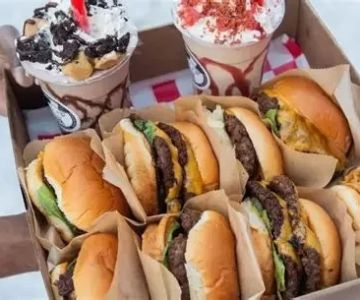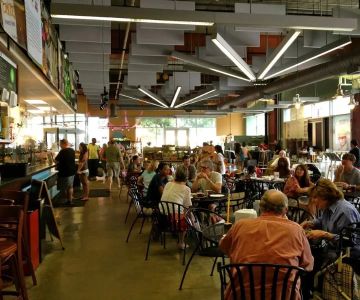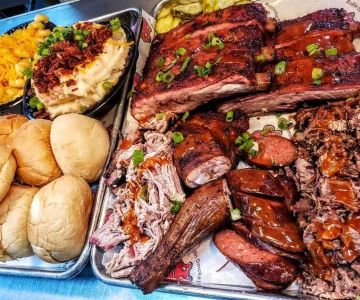- social-media-impact
- content-strategies
- customer-interaction
- user-generated-content
- influencer-marketing
- analytics-and-adaptation
- future-trends
1. The Impact of Social Media on Modern Restaurants
Social media has revolutionized how restaurants connect with their patrons. Platforms such as Instagram, Facebook, and TikTok allow restaurants to showcase their cuisine visually, communicate specials instantly, and foster a community around their brand. This shift has changed diner expectations, making online engagement a critical aspect of a restaurant’s marketing strategy.
Research shows that over 70% of consumers check a restaurant's social media before deciding to visit. This demonstrates that a strong online presence not only draws attention but can directly influence foot traffic. For example, a mid-sized bistro in New York doubled its bookings within months of launching an Instagram campaign featuring behind-the-scenes kitchen stories and customer testimonials.
By using social media effectively, restaurants can reach a broader audience beyond their local area, turning one-time visitors into loyal patrons who actively engage with the brand online and offline.
2. Content Strategies Restaurants Use to Captivate Diners
Creating compelling content is key to social media success. Restaurants employ various strategies such as mouth-watering food photography, live cooking demonstrations, and storytelling to attract attention. Highlighting unique menu items, seasonal dishes, or chef profiles helps create an emotional connection with diners.
Moreover, storytelling extends beyond food to include the restaurant’s history, values, and community involvement. For instance, a farm-to-table restaurant might post about their local suppliers, linking the food’s origin with its freshness and quality. This not only educates diners but also builds trust and authenticity.
Interactive content like polls, quizzes, and “choose your favorite dish” campaigns keeps followers engaged, making the dining experience participatory even before stepping inside the restaurant.
3. Enhancing Customer Interaction Through Social Media
Social media platforms offer tools for direct interaction, enabling restaurants to respond to feedback, answer queries, and resolve complaints quickly. Prompt, personalized replies can transform a neutral or negative experience into a positive one, fostering goodwill and repeat business.
Restaurants also use social media to announce flash sales, events, and special promotions, creating a sense of urgency and exclusivity. For example, a popular café might offer a “Instagram-only” discount code for followers, rewarding engagement while driving immediate visits.
This real-time communication channel is essential for building a loyal community and enhancing customer satisfaction.
4. Leveraging User-Generated Content to Build Trust
User-generated content (UGC) is a powerful tool in restaurant marketing. Encouraging diners to share photos and reviews not only provides authentic promotion but also involves customers directly in the brand narrative.
Many restaurants run hashtag campaigns, inviting diners to post their dining moments online. This increases visibility and creates a repository of genuine customer experiences. When potential diners see real people enjoying their meals, it boosts credibility more effectively than traditional advertising.
Restaurants often repost UGC on their official pages, celebrating their customers and fostering a sense of community that encourages others to join.
5. Influencer Marketing and Partnerships
Collaborating with social media influencers has become a mainstream tactic for restaurants seeking to expand their reach. Influencers with engaged followings can introduce the restaurant to niche audiences and create buzz through authentic content.
For instance, a sushi bar partnering with a local food blogger may generate a series of posts and stories highlighting signature dishes and the dining atmosphere. This form of word-of-mouth marketing is highly trusted by consumers, as influencers’ opinions often carry more weight than conventional ads.
Smart influencer collaborations align with the restaurant’s brand values and target demographic, maximizing return on investment.
6. Using Analytics to Refine Social Media Strategies
Data-driven decision-making is crucial in optimizing social media efforts. Platforms provide detailed analytics on post engagement, follower demographics, and campaign effectiveness. Restaurants analyze these metrics to understand what resonates with their audience and adjust their content and posting schedules accordingly.
For example, if a restaurant notices higher engagement on video recipes during evenings, it can schedule more such content to maximize visibility and interaction. Analytics also help identify underperforming areas, allowing managers to pivot strategies quickly.
This continuous refinement enhances the overall impact of social media marketing, ensuring resources are used efficiently.
7. Emerging Trends in Restaurant Social Media Engagement
The social media landscape is ever-evolving. Emerging technologies like augmented reality (AR) menus and AI-powered chatbots are beginning to influence how restaurants engage diners online. Virtual cooking classes streamed on social media and interactive polls about menu development are growing in popularity, providing innovative ways to deepen customer involvement.
Additionally, sustainability and ethical dining are becoming hot topics. Restaurants sharing stories about their green initiatives or fair trade sourcing through social media appeal to increasingly conscious diners.
Staying ahead of these trends will be key for restaurants looking to maintain strong connections with their audience in the future.
Overall, social media is not just a marketing tool but a vital channel for restaurants to build meaningful relationships with their diners. By combining creative content, active interaction, influencer partnerships, and data analytics, restaurants can create engaging and memorable experiences that go beyond the plate.
If you’re interested in enhancing your dining experience or restaurant offerings, visit Senix Table for curated selections of products and services that complement modern dining trends.







 Mi Luna Tapas Restaurant & Bar4.0 (490 reviews)
Mi Luna Tapas Restaurant & Bar4.0 (490 reviews) Medellin3.0 (183 reviews)
Medellin3.0 (183 reviews) Katz's4.0 (7417 reviews)
Katz's4.0 (7417 reviews) Frisky Whisky4.0 (108 reviews)
Frisky Whisky4.0 (108 reviews) Farmer's Fridge0.0 (0 reviews)
Farmer's Fridge0.0 (0 reviews) Slammin' Salmon (Food Truck)5.0 (49 reviews)
Slammin' Salmon (Food Truck)5.0 (49 reviews) Best Places for Seafood Boils and Clambakes Across the U.S.
Best Places for Seafood Boils and Clambakes Across the U.S. Discover Delicious Vegan Desserts at Local Bakeries Near You
Discover Delicious Vegan Desserts at Local Bakeries Near You Best Late-Night Eats in Major U.S. Cities: Where to Satisfy Your Midnight Cravings
Best Late-Night Eats in Major U.S. Cities: Where to Satisfy Your Midnight Cravings The Ultimate Guide to New Year’s Eve Dining in Major Cities
The Ultimate Guide to New Year’s Eve Dining in Major Cities The Future of Sustainable Restaurants in America: Trends and Innovations
The Future of Sustainable Restaurants in America: Trends and Innovations Best Smoothie and Juice Bars for a Quick Healthy Bite
Best Smoothie and Juice Bars for a Quick Healthy Bite